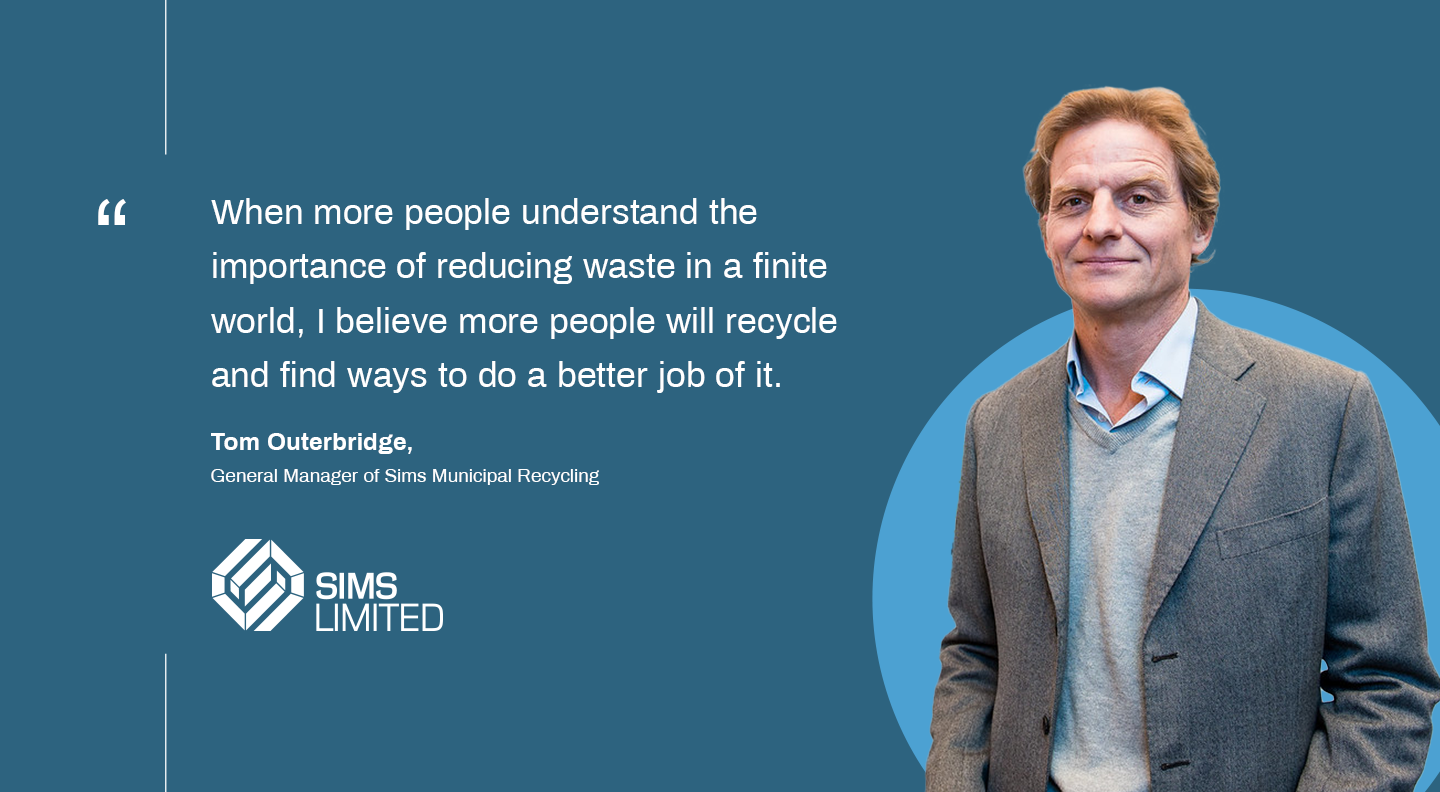When we drop an empty plastic bottle or yesterday’s newspaper into our curbside recycling bin, few of us think of ourselves as an essential supplier to a global, multibillion-dollar value chain. But the actions we take to sort our recyclables in our kitchens is the first step in the path toward ensuring that our used household materials find a second life in new products and advance a circular economy.
Few people understand this better than Tom Outerbridge, who has been the general manager of Sims Municipal Recycling (SMR) for more than 15 years. SMR is the processor and marketer of all commingled curbside recyclables collected in New York City, as well as surrounding towns and cities. SMR also handles recyclables for Palm Beach County, Florida. Outerbridge is currently responsible for approximately 600,000 tonnes per year of recyclables produced by 11 million people.
Similar to farming or mining, the recycling business is impacted by both global markets and local conditions. On the demand side, a natural disaster or change in government policy half a world away can seed disruptions. Earlier in 2020, when the COVID crisis and economic downturn punctured oil prices, it also cut the price of new plastic – making drink bottles made from recycled plastic resin less economically viable. Why? Because every piece of plastic starts life as a fossil fuel and recycled materials have to compete with virgin raw materials prices.
On the supply side, the recycling business is very grassroots and locally driven. The rules, practices and community norms around recycling vary considerably from place to place, contributing to dramatically different local recycling levels. Because of that, SMR works with its municipalities on public education to increase recycling rates and encourages that the right items reach the recycling bins without contamination.
“The success of our business is obviously dependent to a large extent on the market conditions and how good we are at operating,” Outerbridge says. “But the starting point for the whole business is: how well does the public participate?” In New York, the recycling capture rate is approximately 55 percent. “This means 45 percent of good recyclables – items that we want and that we have the ability to process – are still going into a garbage bag,” he says. “That’s in the order of 100,000-plus tonnes a year of material that is being sent to a landfill at a cost to the city. Some of it doesn’t have a huge amount of value, but we still have a market for it. A lot of it does have value.”
Improving how our society uses materials is fundamental to our economic and environmental future. That’s why, in addition to overseeing daily operations, Outerbridge often can be found working with stakeholders across the value chain to demystify recycling and strengthen the system.
- Because successful recyclability starts in the product design phase, more and more brand owners are using the equipment at SMR’s New York processing facility to test the recyclability of new packaging.
- To enhance public awareness, Outerbridge and his staff regularly promote the importance of reducing waste and recycling through its education centre. Activities have ranged from open house events that draw hundreds of New Yorkers to hosting sustainability experts from the World Council for Sustainability Business Development and United Nations.
- To help expand markets for recycling, Outerbridge works with trade associations, regional councils and legislators to help incentivise product manufacturers to choose materials that are most favorable for recycling.
When more people understand the importance of reducing waste in a finite world, Outerbridge believes more people will recycle and find ways to do a better job of it. “The much bigger reward to the environment and to the planet is that you are displacing the use of virgin raw materials,” Outerbridge says. “Yes, there’s an added benefit that you’re not putting a plastic bottle or paper into the landfill. But really the big environmental benefit in terms of energy consumption, water consumption and CO2 emissions is that you’re replacing virgin raw materials with recycled materials to make new products. It’s far more efficient to make new aluminium out of recycled aluminium versus bauxite or paper out of recycled fibre versus raw virgin pulp.”
